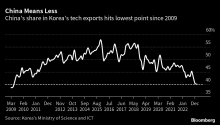Serious business has started
China has raced ahead of the pack in filing patents in nuclear fusion technology, pointing to its ambition to master the science and take the lead in the development of an alternative to fossil fuels.
China came first in a nuclear fusion patent ranking compiled by Tokyo-based research company astamuse -- partly owned by Nikkei -- ahead of second-placed U.S., which was followed by the U.K. and Japan.
The research company ranked 30 countries and regions by studying the 1,133 patents filed between 2011 and September 2022. Each country's score was calculated by using the number of patents filed, the feasibility of each innovation, and the remaining period of exclusivity, among others.
China was also ranked first in the number of patents, and companies and research institutions that had filed patents in the nuclear fusion field. The number of patents filed by China started to increase from 2015, pushing the country ahead of the U.S.
Chinese patents were concentrated in the area of practical applications, such as the creation of a ceramic composite material that can be used in the wall of a nuclear fusion reactor. This technology was developed by the Chinese Academy of Sciences and is considered the most important breakthrough in the survey period.
The Chinese Academy of Sciences was ranked second among the organizations covered in the survey, followed by the Southwestern Institute of Physics, an affiliate of China National Nuclear Corp.
Nuclear fusion refers to the energy released from fusing two hydrogen nuclei. The process requires a reactor that can withstand extreme temperatures, in excess of 100 million C, and one that can allow the nuclei to collide with each other.
This process is sometimes described as "creating a sun on Earth" as it replicates the nuclear fusion reactions at the core of the star. The creation of this energy typically requires tritium and deuterium -- isotopes of hydrogen -- as fuel. In theory, the technology should be able to generate energy equivalent to that produced by 8 tons of oil from just one gram of fuel.
Nuclear fusion reaction stops once fuel runs out and it does not release carbon dioxide in its production. Proponents claim that tritium and deuterium can be obtained from seawater and, therefore, their supply is infinite.
In December, U.S. scientists announced
, saying that they have produced more energy from a fusion experiment than was put in.
Japan is also developing the technology, in partnership with countries including the U.S. and China as part of the international nuclear fusion research project ITER.
"China's strategy appears to move before others do. It is making steady progress," said Kunihiko Okano, visiting professor at Keio University in Tokyo. "China is developing an experimental reactor without waiting for results from ITER experiments."
The reactor has a practical design that allows easy maintenance, Okano said, adding that China has set aside a healthy budget for the program.
The U.S. ranked second in overall patent score as well as in the number of patents. Seven U.S. companies and institutions made it into the top 20 organizations, the highest among the countries studied.
Commercial companies have led nuclear fusion research in the U.S., including Helion Energy, ranked 12th, and Google at 18th. Helion has patents in efficient power generation from nuclear fusion. Google appears to be working on developing devices to speed up nuclear fusion experiments.
The U.S. was dominant in nuclear fusion research until around 2010. Under President Joe Biden, the government is now stepping up research support to help commercialize nuclear fusion technologies. In September, it announced a plan to offer $50 million in additional financial support.
Japan's Hamamatsu Photonics and Toyota Motor each came in at fifth and seventh in the ranking of organizations.
Hamamatsu Photonics has expertise in laser technologies, such as in striking laser beams at nuclei and using lasers to increase energy levels in fusion reactions. Toyota is a partner in Hamamatsu Photonics' research. All 13 patents from Toyota were filed jointly with Hamamatsu Photonics.
Topping the corporate and organization ranking was British startup Tokamak Energy. The Oxfordshire-based company is the first private company to achieve a plasma temperature of 100 million C in 2022.


